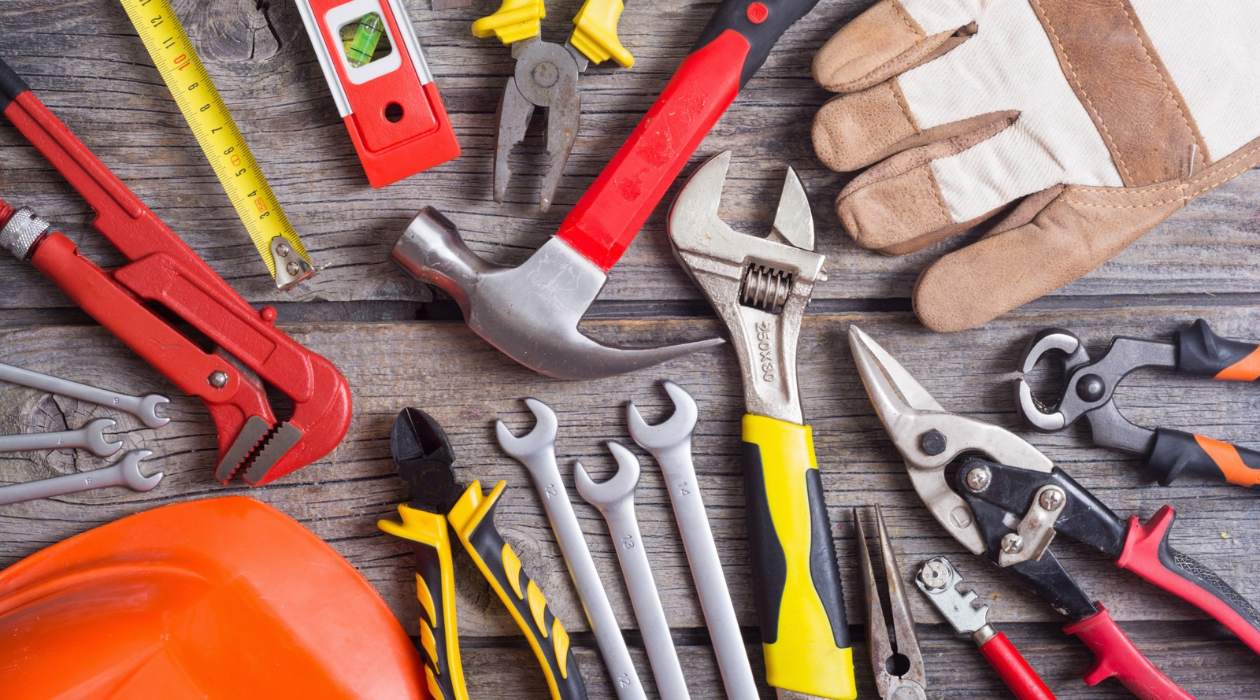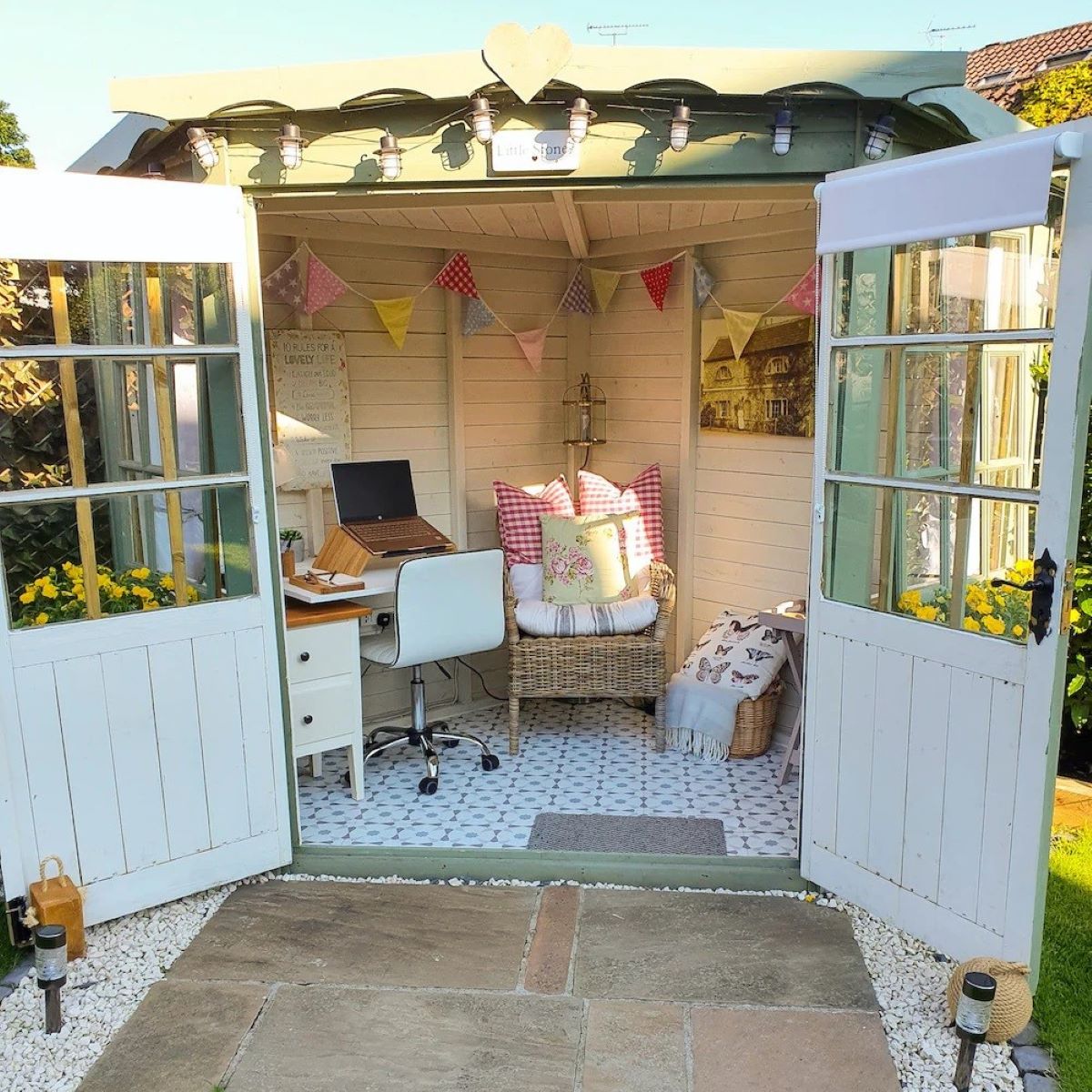Home>Articles>Rent Equipment For Your DIY Projects At A Tool Library Near You


Articles
Rent Equipment For Your DIY Projects At A Tool Library Near You
Modified: January 23, 2024
Find articles and guides on how to rent equipment for your DIY projects at a nearby tool library. Save money and get the tools you need without buying them.
(Many of the links in this article redirect to a specific reviewed product. Your purchase of these products through affiliate links helps to generate commission for Storables.com, at no extra cost. Learn more)
Introduction
Are you considering starting a DIY project but don’t have all the tools you need? Or perhaps you have a one-time need for a specific equipment, but don’t want to invest in buying it? In either case, a tool library may be the answer to your dilemma.
A tool library is a unique concept that allows individuals to borrow tools and equipment for a specified period of time, similar to how you would borrow books from a traditional library. It provides a cost-effective and sustainable solution for those who want to engage in DIY projects without the burden of purchasing and storing a wide range of tools.
In this article, we will explore the concept of tool libraries and the benefits they offer. We will also discuss how tool libraries operate, how to find one near you, and provide tips on how to make the most of your tool library experience.
Whether you’re a homeowner seeking tools for a home renovation project or a hobbyist looking to experiment with different equipment, a tool library can be a valuable resource to help you accomplish your goals.
Key Takeaways:
- Tool libraries offer a cost-effective and sustainable solution for DIY enthusiasts by providing access to a wide range of tools without the burden of ownership. This promotes affordability, reduces waste, and fosters community engagement.
- Renting tools from a tool library not only saves money and storage space but also allows individuals to try out different equipment, receive expert guidance, and contribute to a more environmentally friendly approach to DIY projects.
Read more: Understanding Your Home’s Circuits
What is a Tool Library?
A tool library is a community-based resource that allows people to borrow tools and equipment for a designated period of time. Just like a traditional library, you can visit a tool library, browse their collection of tools, borrow the ones you need, and return them once you’ve finished using them. It operates on the principle of sharing resources and promoting sustainable practices.
Tool libraries typically offer a wide variety of tools and equipment, ranging from power tools like drills, saws, and sanders, to hand tools such as hammers, screwdrivers, and wrenches. They may also lend specialized equipment for specific tasks, such as plumbing or electrical work.
One of the key advantages of a tool library is its affordability. Instead of purchasing expensive tools that you may only need for a short period of time, you can borrow them from a tool library at a fraction of the cost. This can save you money, especially if you’re working on a tight budget or have limited storage space for tools.
Tool libraries also promote sustainability by reducing the need for individuals to buy new tools. By sharing resources, tool libraries help to reduce waste and lessen the environmental impact associated with manufacturing and disposing of tools.
Moreover, tool libraries foster a sense of community and collaboration. They provide a space for people with different skill levels and interests to come together and share their knowledge and expertise. Whether you’re a seasoned DIY enthusiast or a beginner looking for guidance, tool libraries often have knowledgeable staff and volunteers who can offer assistance and guidance on tool selection and usage.
Overall, a tool library is a valuable community resource that promotes access to tools, affordability, sustainability, and community engagement. It offers a practical solution for individuals who want to undertake DIY projects or complete small tasks without the expense and hassle of purchasing and maintaining a wide range of tools.
Benefits of Renting Equipment for DIY Projects
Renting equipment from a tool library for your DIY projects offers several key benefits that can enhance your overall experience and help you achieve your goals more efficiently. Let’s explore some of these benefits:
Cost Savings: Renting tools and equipment from a tool library can significantly reduce your project costs. Purchasing specialized tools that you may only need for a one-time project can be expensive, whereas renting allows you to access the tools you need without the hefty price tag. This cost-saving aspect can be especially beneficial for budget-conscious individuals or those who engage in occasional DIY projects.
Access to a Wide Range of Tools: Tool libraries typically have an extensive collection of tools and equipment for various tasks. By renting tools, you have access to a wide range of options without the need to invest in buying expensive tools or cluttering your storage space. This flexibility allows you to tackle different projects without limitations.
Expert Assistance: Tool libraries often have knowledgeable staff and volunteers who can provide guidance on tool selection and usage. They can offer valuable advice on how to properly operate equipment, troubleshoot issues, and ensure safety. Their expertise can save you from potential mistakes and help you complete your project with confidence.
Try Before You Buy: Renting tools from a tool library gives you the opportunity to try out different brands and models before making a purchase. This can be particularly useful if you’re considering investing in a specific tool but want to test it out in real-world scenarios first. By renting and using the tool, you can assess its performance, reliability, and suitability for your needs before deciding to buy.
Saving Storage Space: Owning a comprehensive collection of tools requires adequate storage space, which may not be feasible for everyone. Renting tools from a tool library eliminates the need for long-term storage and allows you to free up space in your home or garage. It’s a practical solution for individuals with limited storage capacity or those who prefer a minimalist lifestyle.
Sustainable and Environmentally Friendly: Renting tools promotes sustainability by reducing unnecessary consumption and waste. By sharing resources, tool libraries contribute to a circular economy and help minimize the environmental impact associated with the production, transportation, and disposal of tools. Renting tools aligns with a more eco-conscious approach to DIY projects.
Community Engagement: Tool libraries serve as community hubs where people of different skill levels and interests can connect, share knowledge, and collaborate. They provide an opportunity to meet like-minded individuals, learn new techniques, and engage in meaningful conversations. Building relationships within the community can enhance your overall DIY experience and open doors to further learning and growth.
Overall, renting tools from a tool library offers numerous benefits, including cost savings, access to a wide range of tools, expert assistance, the opportunity to try before buying, saving storage space, sustainability, and community engagement. Consider exploring your local tool library for your next DIY project and experience the advantages firsthand.
How Does a Tool Library Work?
A tool library operates on a simple and straightforward concept, making it easy for anyone to participate. Here’s a breakdown of how a tool library typically works:
Browsing and Selection: You begin by visiting the tool library in person or checking their online catalog. You can browse through the available tools and equipment, which are categorized and listed for easy navigation. You can select the specific tools you need for your project, keeping in mind the borrowing period and any additional requirements or fees.
Registration: Before borrowing tools, you will need to register with the tool library. This process may involve providing identification, contact information, and signing a membership agreement. Some tool libraries may charge a nominal yearly or monthly fee for membership, while others operate on a donation basis.
Borrowing the Tools: Once registered, you can borrow the selected tools. The borrowing period varies from one tool library to another, but it is typically a few days to a couple of weeks. During this time, you have the freedom to use the tools as needed for your project. It’s important to adhere to any usage guidelines to ensure the tools are returned in good condition.
Returning the Tools: Once you’ve completed your project or no longer need the tools, you return them to the tool library within the specified time frame. Make sure to clean the tools and return them in the same condition as when you borrowed them. The tool library staff will inspect and assess the tools to ensure they are ready for the next borrower.
Renewing or Extending: In some cases, you may need more time with the tools than initially anticipated. If this happens, it is important to communicate with the tool library and inquire about the possibility of renewing or extending the borrowing period. Some tool libraries may allow for this, depending on availability and demand.
Damage and Liability: Accidents can happen, and tools may occasionally get damaged during use. In such cases, it is important to report any damages or malfunctions to the tool library. Depending on their policy, you may be held responsible for repair costs or a replacement fee. This is why it’s crucial to handle the tools with care and use them according to the provided instructions.
Volunteer Opportunities: Tool libraries often rely on volunteers to assist with various tasks, such as organizing the tool collection, providing guidance to borrowers, or conducting maintenance and repairs on the tools. Volunteering at a tool library can be a great way to contribute to the community and learn more about different tools and their uses.
Community Events and Workshops: Many tool libraries organize community events, workshops, and classes to educate and engage members. These events can cover a wide range of topics, including tool usage, DIY projects, and sustainable practices. Participating in these activities can expand your knowledge and network within the DIY community.
Donations: Tool libraries often rely on donations to expand their tool collection and provide more resources to their members. If you have tools that you no longer use or need, consider donating them to your local tool library. It’s a meaningful way to give back to the community and help others with their projects.
Overall, a tool library operates on a system of borrowing tools, returning them within a designated time frame, and fostering a sense of community and collaboration. By following the organization’s guidelines and respecting the shared resources, you can make the most of your tool library experience and enjoy the benefits it offers.
Finding a Tool Library Near You
If you’re interested in accessing the wide range of tools and equipment offered by a tool library, you’ll need to find one in your area. Here are some methods you can use to locate a tool library near you:
Online Search: The internet is a valuable resource for finding tool libraries in your area. Conduct a simple search using keywords like “tool library” or “borrow tools” followed by your city or region. This should provide you with a list of tool libraries in your vicinity. Visit their websites or social media pages for more information on their offerings, membership requirements, and hours of operation.
Local Community Centers and Libraries: Community centers, libraries, or even local government offices often have information on nearby tool libraries. Visit or contact these institutions to inquire about any tool libraries they may be aware of. They can provide you with valuable leads and contact information.
Word of Mouth: Spread the word among your friends, neighbors, and colleagues that you’re looking for a tool library. They may have personal experiences or know someone who can direct you to a local tool library. Personal recommendations can be particularly helpful in finding reputable and well-established tool libraries.
Online Directories: There are several online directories that specialize in listing tool libraries and sharing information about their locations and offerings. Websites like Local Tools (localtools.org) and Share Starter (sharestarter.org) provide comprehensive directories of tool libraries across different regions. These directories often include user reviews and ratings, which can help you make informed decisions.
Social Media Groups and Forums: Join local DIY or home improvement groups on social media platforms like Facebook or Reddit. These communities often have members who are familiar with tool libraries in the area and can point you in the right direction. These platforms also provide an opportunity to connect with fellow DIY enthusiasts and share experiences.
Local Hardware Stores: Visit your neighborhood hardware stores and inquire if they have any information on nearby tool libraries. They may have partnerships or connections with tool libraries and can guide you in finding one in your vicinity.
Nonprofit Organizations: Some tool libraries operate as part of nonprofit organizations focused on promoting sustainability and community engagement. Research local nonprofit organizations working in related areas and see if they have a tool library program or can direct you to one.
Remember, tool libraries may not be available in every location, particularly in more rural or remote areas. If you’re unable to find a tool library nearby, consider online rental platforms that offer tool and equipment rentals delivered straight to your doorstep. These platforms can provide a similar borrowing experience, albeit without the community aspect of a physical tool library.
Once you’ve located a tool library near you, take the time to understand their membership requirements, fees (if any), borrowing policies, and any additional services they offer. This information will ensure a smooth and enjoyable experience when accessing the tools and resources you need for your DIY projects.
Before renting equipment from a tool library, make sure to check the condition of the tools and ask about any usage instructions or safety precautions.
Read more: How To Sell Your DIY Projects
How to Register and Borrow Tools
Registering and borrowing tools from a tool library is a simple process that typically involves a few key steps. Here’s a guide on how to register and borrow tools from a tool library:
Step 1: Research: Start by researching tool libraries in your area and identifying the one that best suits your needs. Visit their website or contact them to gather information about their membership requirements, borrowing policies, and any associated fees.
Step 2: Membership: Most tool libraries require you to become a member before you can borrow tools. Some offer free membership, while others may have a nominal yearly or monthly fee. Fill out the membership application and provide any necessary identification and contact information. Make sure to read and understand the membership agreement before signing.
Step 3: Orientation: Some tool libraries may require new members to attend an orientation session. This session is designed to familiarize you with the library’s policies, procedures, and safety guidelines. During the orientation, you may receive a tour of the facility and learn how to navigate the tool inventory.
Step 4: Tool Selection: Once you’ve completed the registration process, you can begin selecting the tools you need for your project. Visit the tool library in person or check their online catalog to browse through the available tools. Take note of their availability and borrowing period to ensure they align with your project timeframe.
Step 5: Borrowing Process: When you’re ready to borrow the tools, visit the tool library during their operating hours. Present your membership card or provide your identification to the library staff. Inform them of the tools you wish to borrow and confirm their availability. They may check out the tools for you, record the borrowing period, and provide any necessary instructions for safe usage.
Step 6: Tool Return: Once you’ve finished using the tools, return them to the tool library within the designated borrowing period. Make sure to clean the tools, remove any debris or dust, and return them in the same condition as when you borrowed them. If you encounter any issues or damages during use, notify the tool library staff to assess and address the situation.
Step 7: Renewal or Extension: If you require more time with the tools or need to extend the borrowing period, contact the tool library in advance. Depending on their policy and availability, they may allow you to renew or extend the borrowing period. Clear communication is vital to ensure a smooth borrowing experience.
Step 8: Respect Shared Resources: It’s important to treat the borrowed tools with care and respect. Follow the provided guidelines for tool usage and safety to prevent accidents and damages. Avoid lending the tools to others without permission from the tool library, as this can violate their borrowing policies and put you at risk for liability.
Step 9: Community Engagement: Engage with the tool library community by attending events, workshops, or volunteering opportunities. Building relationships with staff and fellow members can enhance your tool library experience and provide valuable networking and learning opportunities.
Remember, each tool library may have its own specific procedures and guidelines, so it’s essential to familiarize yourself with their individual requirements. By following these steps and respecting the shared resources, you can make the most of your tool library membership and borrow the tools you need for your DIY projects without the financial burden of purchasing and maintaining a wide range of tools.
Types of Equipment Available at Tool Libraries
Tool libraries offer a diverse range of equipment that can cater to various DIY projects and tasks. While the specific inventory may vary from one tool library to another, here are some common types of equipment you can expect to find:
Power Tools: Power tools are a staple in tool libraries and can include items such as drills, circular saws, jigsaws, sanders, routers, and angle grinders. These tools provide the power and efficiency needed for cutting, shaping, sanding, and drilling tasks.
Hand Tools: Hand tools are essential for many DIY projects and include items such as hammers, screwdrivers, wrenches, pliers, levels, and tape measures. These tools are used for tasks like fastening, measuring, and precision work.
Gardening and Landscaping Tools: Tool libraries often have a selection of gardening and landscaping tools, such as shovels, rakes, pruners, hedge trimmers, lawn mowers, and leaf blowers. These tools are useful for maintaining your yard, pruning plants, and landscaping projects.
Painting and Decorating Tools: Painting and decorating tools are commonly available at tool libraries. These can include paint sprayers, rollers, brushes, drop cloths, sanders, and wallpaper steamers. They are essential for giving your walls, furniture, or other surfaces a fresh look.
Plumbing Tools: If you’re tackling plumbing projects, tool libraries may offer plumbing tools such as pipe wrenches, pipe cutters, drain snakes, and plumbing pliers. These tools can assist with repairs, installations, and maintenance work related to plumbing systems.
Electrical Tools: Electrical tools can be found in tool libraries to assist with electrical projects or repairs. Examples include voltage testers, wire cutters, wire strippers, multimeters, and electrical tape. It’s important to have proper knowledge and respect for electrical safety when using these tools.
Carpentry and Woodworking Tools: Tool libraries often have a wide range of carpentry and woodworking tools to support projects involving wood. This can include saws (circular saws, jigsaws, hand saws), chisels, planes, routers, clamps, and sanders. These tools enable precise cutting, shaping, and finishing of wood materials.
Masonry Tools: For projects involving bricks, concrete, or other masonry materials, tool libraries may provide masonry tools like trowels, brick chisels, brick hammers, levels, and concrete mixers. These tools help with bricklaying, concrete work, and general masonry tasks.
Ladders and Scaffolding: Tool libraries may offer ladders and scaffolding to help with tasks that require working at heights. Different sizes and types of ladders, as well as mobile or adjustable scaffolding, can be available for safe and secure access to elevated areas.
Specialty Tools: Some tool libraries may have specialty tools for more specific projects. These can include tools like tile cutters, drywall lifts, soldering irons, carpet cleaners, pressure washers, and more. These specialized tools can be helpful for specific tasks that require specialized equipment.
It’s important to note that the availability of tools may vary from one tool library to another. Additionally, the condition and quality of the tools may differ based on the library’s maintenance practices and the age of the equipment. It’s always a good idea to inspect the tools before borrowing them to ensure they are in working condition.
By accessing the diverse range of tools offered by tool libraries, you can effectively tackle a wide variety of DIY projects without the need to invest in and store a large collection of tools yourself. Whether you’re a homeowner, hobbyist, or aspiring DIY enthusiast, tool libraries provide a valuable resource for accessing the equipment you need to bring your projects to life.
Tips for Utilizing a Tool Library
Utilizing a tool library can streamline your DIY projects and help you make the most of the resources available. Here are some helpful tips to enhance your experience with a tool library:
1. Plan Ahead: Before visiting the tool library, plan your project in detail and make a list of the tools you’ll need. This will save you time and ensure you select the right tools for the job.
2. Check Availability: Some tools may be in high demand, especially during popular home improvement seasons. Check the tool library’s website or call ahead to confirm the availability of the tools you need to avoid any disappointment.
3. Study Tool Manuals or Watch Tutorials: If you haven’t used a particular tool before, take the time to study the tool’s manual or watch tutorial videos online. Familiarize yourself with safety precautions, proper usage, and any specific maintenance requirements for the tool.
4. Ask for Guidance: If you’re unsure about a tool or need assistance, don’t hesitate to ask the tool library staff or volunteers for guidance. They can provide valuable tips and recommendations, ensuring you have a successful and safe DIY experience.
5. Return Tools on Time: Respect the borrowing period and return the tools on time. Be mindful of other borrowers who may be waiting for the same tools. If you need more time, communicate with the tool library in advance to inquire if an extension is possible.
6. Clean and Maintain the Tools: Take care of the tools during use and return them in clean and good working condition. Clean off any debris or dust, and wipe down the tools before returning them. This helps maintain the tools’ performance and ensures they are ready for the next borrower.
7. Share Feedback: If you have any feedback or suggestions regarding the tool library’s offerings or services, share it with the staff or volunteers. Your input can help them improve and better meet the needs of the community.
8. Attend Workshops and Events: Take advantage of any workshops, events, or classes organized by the tool library. These can be great opportunities to learn new skills, gain inspiration, and connect with like-minded DIY enthusiasts in your community.
9. Volunteer: Consider volunteering at the tool library if you have the time and interest. Volunteering not only helps support the tool library’s operations but also allows you to learn even more about tools and build relationships with other members of the community.
10. Donate Tools: If you have tools that are in good condition but no longer needed, consider donating them to the tool library. Your donation can expand their inventory and benefit other individuals in their DIY endeavors.
Remember, a tool library is a shared resource, and by following these tips, you can ensure a positive and rewarding tool-borrowing experience. Take full advantage of the resources and support provided by the tool library to bring your DIY projects to life.
Conclusion
Tool libraries offer a practical and sustainable solution for individuals seeking access to a wide range of tools and equipment without the burden of ownership. By borrowing tools from a tool library, you can save money, reduce waste, and engage with a community of like-minded DIY enthusiasts.
These community-based resources provide numerous benefits, including cost savings by eliminating the need to purchase expensive tools for one-time or occasional use. Tool libraries also promote sustainability by reducing the consumption and disposal of tools, contributing to a more environmentally friendly approach to DIY projects.
When utilizing a tool library, it’s important to research and find one in your area that aligns with your needs. Register as a member and take advantage of orientation sessions offered by the library to familiarize yourself with their policies and guidelines.
Browsing the inventory and selecting the tools you need for your project is a crucial step. Check availability and plan ahead to ensure efficiency and effectiveness in your DIY endeavors. Ask for guidance and support from the tool library staff or volunteers if you need assistance or have questions about specific tools.
Respecting the borrowing timeframe, returning the tools clean and in good condition, and adhering to any usage guidelines are essential practices to maintain a positive relationship with the tool library and ensure the tools are ready for the next borrower.
Engaging with the tool library community through workshops, events, and volunteering opportunities can enhance your DIY experience and foster connections with fellow members who share a passion for DIY projects and sustainable practices.
In conclusion, tool libraries are valuable resources that provide access to tools, promote affordability, sustainability, and community engagement. By utilizing a tool library, you can embark on your DIY projects with confidence, knowing that the tools you need are readily available, and that you’re contributing to a more sustainable and connected community.
Frequently Asked Questions about Rent Equipment For Your DIY Projects At A Tool Library Near You
Was this page helpful?
At Storables.com, we guarantee accurate and reliable information. Our content, validated by Expert Board Contributors, is crafted following stringent Editorial Policies. We're committed to providing you with well-researched, expert-backed insights for all your informational needs.















0 thoughts on “Rent Equipment For Your DIY Projects At A Tool Library Near You”